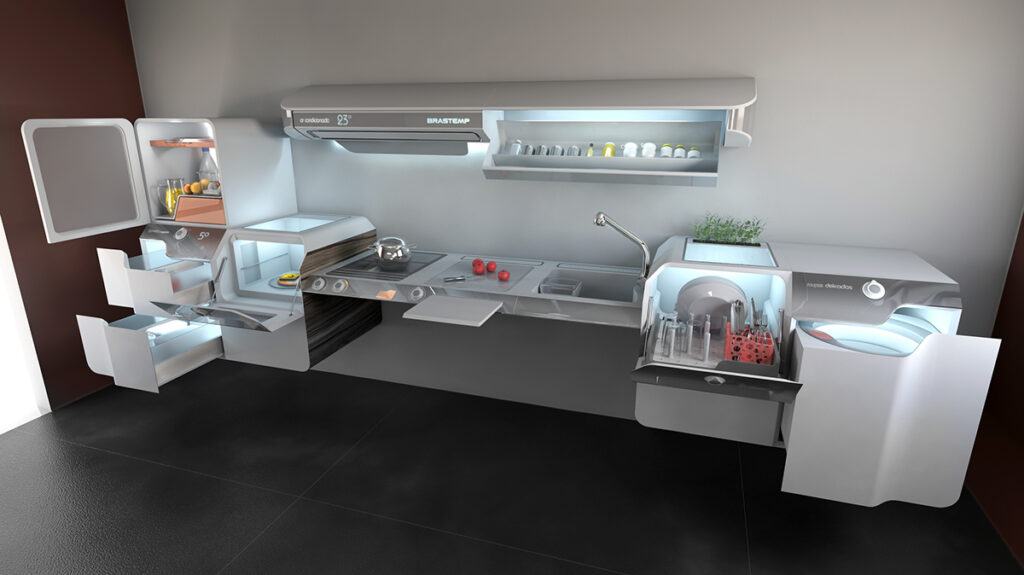
AI for Kitchen Design: Revolutionizing Modern Interiors
Have you ever wondered why Thermomix revolutionised so many kitchens? It’s not just about making life easier – it’s about democratising culinary excellence. And now, AI is doing exactly the same thing with work.
Imagine this: just as Thermomix allows anyone to make a decent risotto following a recipe, AI allows professionals without programming experience to create applications or analyse complex data following predefined prompts. It is the first level of transformation, and it is valuable.
But the real magic happens when someone in the USA who understands the culinary fundamentals comes across a Thermomix. They don’t just follow recipes – they experiment, innovate, discover new possibilities. They combine traditional techniques with the capabilities of the appliance to create something completely new. The result? Dishes that were once impossible or took hours to make are now a reality. Similarly, AI for kitchen design allows chefs and homeowners to innovate and optimize kitchen layouts, blending technology and creativity for even greater possibilities.
AI works the same way. Yes, you can use ChatGPT to write emails or create presentations following proven formulas. But true innovators are going further: they combine their professional expertise with AI capabilities to reinvent processes, create new business models, and solve problems we didn’t even know we could tackle.
The lesson is clear: don’t stick to pre-established “recipes.” Understand the fundamental capabilities of technology, experiment, be curious. The real revolution is not in following prompts, but in reimagining the possible.
AI and Work: A Revolution Like Thermomix in the Kitchen
Consider how Thermomix transformed home cooking. It wasn’t just about convenience – it democratized culinary excellence. Now, AI is doing the same thing to professional work, and the parallels are striking.
Think about it: just as Thermomix enables anyone to create a decent risotto by following a recipe, AI allows professionals with no coding experience to build applications or analyze complex data using predefined prompts. That’s the first level of transformation, and it’s valuable.
But the real magic happens when someone who understands culinary fundamentals gets their hands on a Thermomix. They don’t just follow recipes – they experiment, innovate, discover new possibilities. They combine traditional techniques with the machine’s capabilities to create something entirely new. The result? Dishes that were previously impossible or took hours become reality. Similarly, AI for kitchen design empowers chefs and homeowners to optimize kitchen layouts, enhancing functionality and fostering creativity for more efficient cooking experiences.
AI works the same way. Yes, you can use ChatGPT to write emails or create presentations following proven formulas. But true innovators are going further: they’re combining their professional expertise with AI capabilities to reinvent processes, create new business models, and solve problems we didn’t even know we could tackle.
The lesson is clear: don’t get stuck in preset “recipes.” Understand the fundamental capabilities of the technology, experiment, be curious. The real revolution isn’t in following prompts – it’s in reimagining what’s possible.
